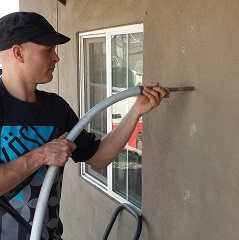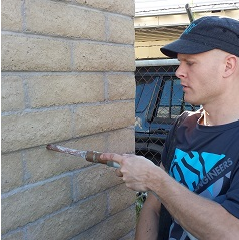RetroFoam – The Best Insulation For Existing Walls
Fix your comfort problems by upgrading your wall insulation!
RetroFoam Insulation Works In Wood Framed Walls & Block Walls

Wood Framed Walls
Most wood-framed homes in Phoenix never had a wall insulation inspection when they were built. As a result, your home likely has incorrectly installed and missing insulation in the walls. Furthermore, the existing fiberglass insulation in your walls settles and degrades over time.
In Arizona, wall insulation problems are often the source of discomfort in wood-framed homes built prior to 2010.
Injecting RetroFoam into your walls will fix your poorly performing wall insulation. Which in turn will make your home more comfortable and energy-efficient.
Slump Block Walls
Block home construction was popular in Phoenix from the 1950s to the 1980s before air conditioning was a standard construction feature. Consequently, block walls built during these years have no insulation.
Modern block homes in Phoenix always insulate the block cores as part of the construction process. Block wall insulation keeps the home comfortable and reduces utility bills.
If you have an older block that you cool with air conditioning, injecting RetroFoam into the block walls will solve the comfort issues you have in your home.
